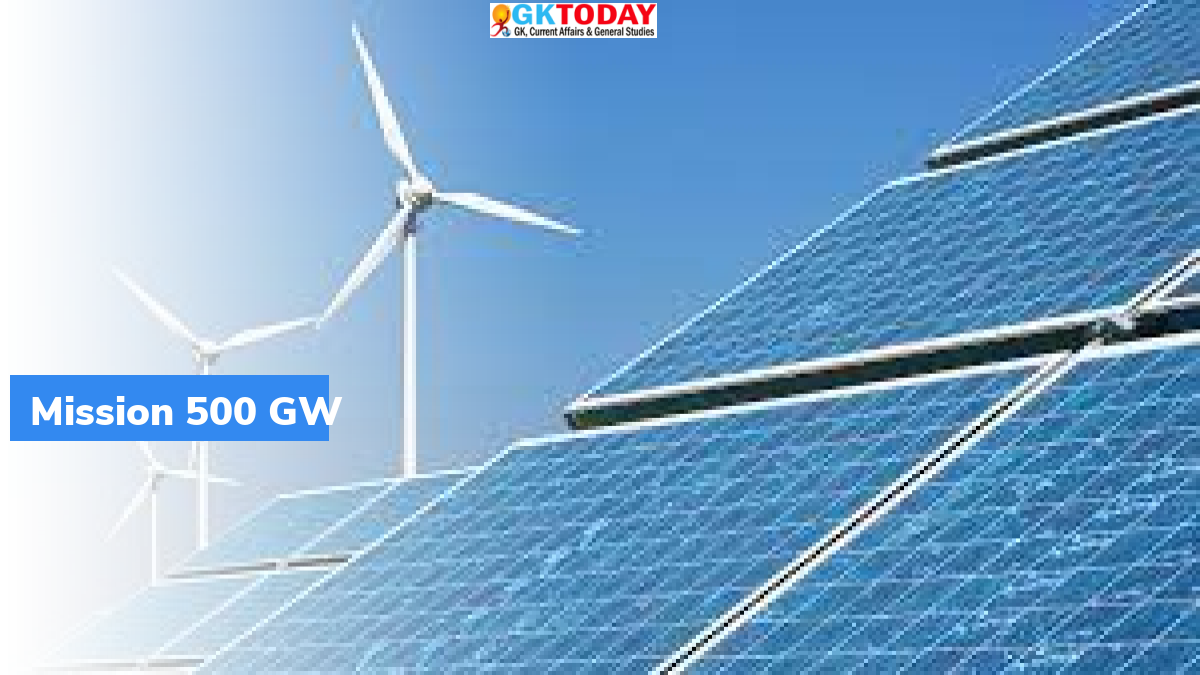Mission 500 GW
The Mission 500 GW was launched by the Ministry of Power and New and Renewable Energy. Under the Mission, India aims to generate 500 GW of renewable energy. This mission was announced by PM Modi at the COP26 held in Glasgow.
Panel set up
In December 2021, the Government of India created a panel to achieve the target. The panel is to assess the issues of transmission, energy mix (solar, wind, tidal, etc) for achieving 500 GW. Also, the panel will assess the storage requirements. It will create a regulatory framework to scale up the renewable energy and draw in crucial foreign investment in to the renewable sector.
What is the plan?
- In 2021, the capacity of India’s renewable energy was 101 GW. India ais to increase this to 500 GW by 2030. Therefore, India is now planning to create 400 GW of renewable energy between 2021 and 2030.
- In 2021, India is adding 8 GW of renewable energy per annum. In 2020, India added 12 GW. Now, this has to be increased to 40 GW per annum to achieve the target.
- Earlier India had set the target as 450 GW. Now 50 GW has been added.
- So far, the hydro power projects have been excluded from the mission. The plan is to create 390 GW of renewable energy and add on 60 GW of hydro energy.
- Earlier the earlier set 450 GW of target was to come from 280 GW of solar power and 140 GW of wind energy. The remaining was o come from hydrogen and biofuel.
Mission Guidelines
In November 2021, the Ministry issued guidelines for the Mission 500 GW. Under the guidelines, the ministry asked the thermal generation companies to set up renewable energy generation capacity. The gains from the bundling of thermal and renewable energy is to be shared between generator and distributor. As the renewable energy is balanced with the thermal energy, the DISCOMs need not acquire separate capacity for balancing renewable energy.


